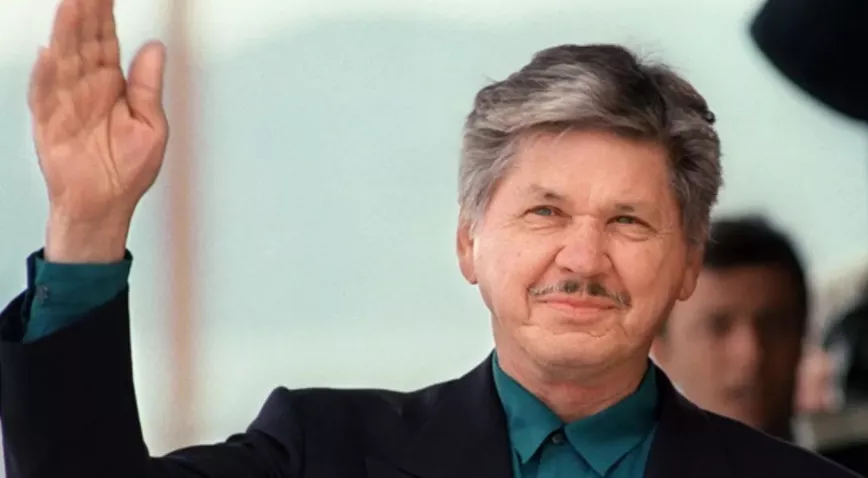Charles Bronson was an American actor most known for his roles as a cop, gunfighter, and vigilante in vengeance films. He worked with filmmakers such as Michael Winner and J. Lee Thompson for a long time, and he and his second wife, Jill Ireland, acted in 15 films together.
He was the world’s No. 1 box office draw in the early 1970s, charging $1 million for each picture. In films like “The Magnificent Seven” and “Death Wish,” he was most known for portraying tough-guy vigilantes.
He worked as a coal miner in his teens before being recruited to fight in World War II. “The Dirty Dozen” (1967), “Ten to Midnight” (1983), “The President’s Assassin” (1987), “Death Wish V” (1994), and “Dead to Rights” (1995) are among his other films (1995).
He was noted for playing archetypal hard-hitting roles with flair and was one of the most skilled and diverse performers in the American cinema business.
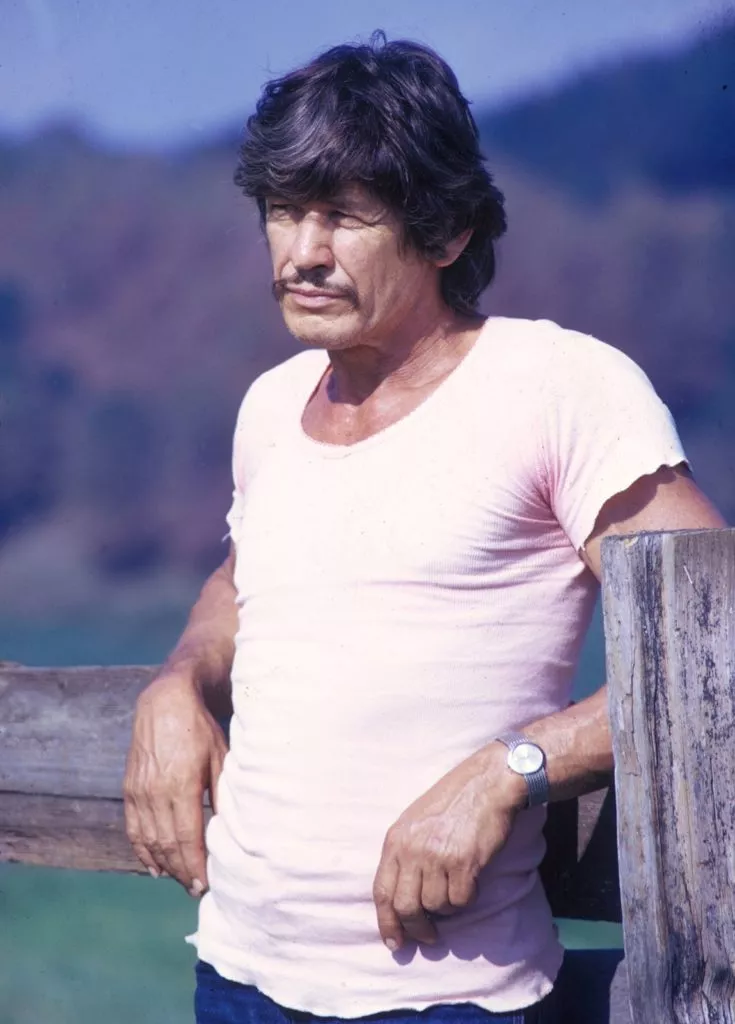
How did Charles Bronson die?
An International film star also known as an American tough guy died at Cedars-Sinai Medical center located in Los Angeles. The cause of his death is pneumonia and he was 81 years at that time.
See also Why Leonardo DiCaprio may never get married & have Kids Either
What did Charles Bronson become known for?
Being an actor in the United States of America. “Still distrustful, still retains grudges, still despises interviews, still hates to offer anything of himself, still can’t believe it has actually happened to him,” Bronson was reported as saying. Charles Bronson is a well-known actor. Death Factors.
Charles Bronson died on August 30, 2003, at the age of 81, at Cedars-Sinai Medical Center in Los Angeles. In his later years, his health worsened, and he resigned from acting in August 1998 after having hip replacement surgery.
His death was attributed to pneumonia and Alzheimer’s disease, according to reports. However, he had ailments such as “respiratory failure,” “metastatic lung cancer,” and, secondarily, “chronic obstructive pulmonary disease” and “congestive cardiomyopathy,” which were not listed as causes of death. He was laid to rest at West Windsor, Vermont’s Brownsville Cemetery.
Charles Bronson’s Bio, Age
Charles Bronson’s real name was Charles Dennis Buchinsky, and he was born on November 3rd, 1921.

He was born in Ehrenfeld, Pennsylvania, in the mining district of the Allegheny Mountains north of Johnstown, Pennsylvania, as the eleventh of fifteen children into a Roman Catholic family of Lithuanian origin.
His 81st birthday was recently celebrated. His ethnicity was Mixed and his nationality was American-Lithuanian.
His father, Valter is P. Buinskis, a Lipka Tatar from Druskininkai in southern Lithuania, subsequently changed his name to Walter Buchinsky to sound more American, and his mother, Mary (née Valinsky), whose ancestors were from Lithuania, was born in the coal-mining town of Tamaqua, Pennsylvania.
He, like many of the youngsters he grew up with, did not speak English at home throughout his upbringing in Pennsylvania. When his father died when he was ten, he began working the mine as well.
He subsequently claimed that each ton of coal he dug was worth one dollar. In another interview, he said that in order to make $1 each week, he had to work double shifts. He remembered getting hungry many times.
He was the youngest of fourteen siblings. Roy Buchinsky was the name of one of his brothers. His Zodiac sign was Scorpio, and he was a devout Christian.
Charles Bronson was the first in his family to get a high school diploma. He went to Pasadena Playhouse after graduating from South Fork High School.
After that, he worked in a mine until 1943, when he enrolled in the United States Army Air Forces during World War II.
In 1945, he was a Boeing B-29 Superfortress aerial gunner with the Guam-based 61st Bombardment Squadron of the 39th Bombardment Group, which flew combat missions against the Japanese home islands.
He flew 25 missions and was awarded the Purple Heart for combat wounds.
Who got Charles Bronson’s money after his death?
At the time of Charles’s death, Bronson’s net worth was $45 million and his wife was given $1.6 million, and his mansion was worth $8 million.
Timeline of Charles Bronson’s Career
Before joining a theater organization in Philadelphia, Pennsylvania, Charles Bronson worked at a variety of odd jobs. While both strivings to perform on stage, he shared a flat in New York City with Jack Klugman.
He went to Hollywood in 1950, enrolled in acting courses, and started performing in little parts. In the year 1951, he had his first uncredited film part as a sailor in Henry Hathaway’s picture “You’re in the Navy Now.”
The Mob (1951), directed by John Sturges; Bloodhounds of Broadway (1952); Battle Zone (1952); Pat and Mike (1952), as a boxer and mob enforcer; Diplomatic Courier (1952), another for Hathaway; My Six Convicts (1952); The Marrying Kind (1952); and Red Skies of Montana (1952).
In the year 1952, he fought in a ring with Roy Rogers on Rogers’ program “Knockout.” He also appeared in an episode of “The Red Skelton Show” and in an episode of “Biff Baker, U.S.A.” alongside fellow guest star Lee Marvin.
He next appeared in Miss Sadie Thompson (1953), Andre de Toth’s House of Wax (1953), The Clown (1953), Torpedo Alley (1953), and Riding Shotgun.
During the House Un-American Activities Committee (HUAC) hearings in 1954, he changed his surname from Buchinsky to Bronson. With a surname, he had a noteworthy supporting role as an Apache, “Hondo,” in director Robert Aldrich’s picture Apache (1954), followed by appearances in MGM’s Tennessee Champ (1954) and Crime Wave (1955). (1954).
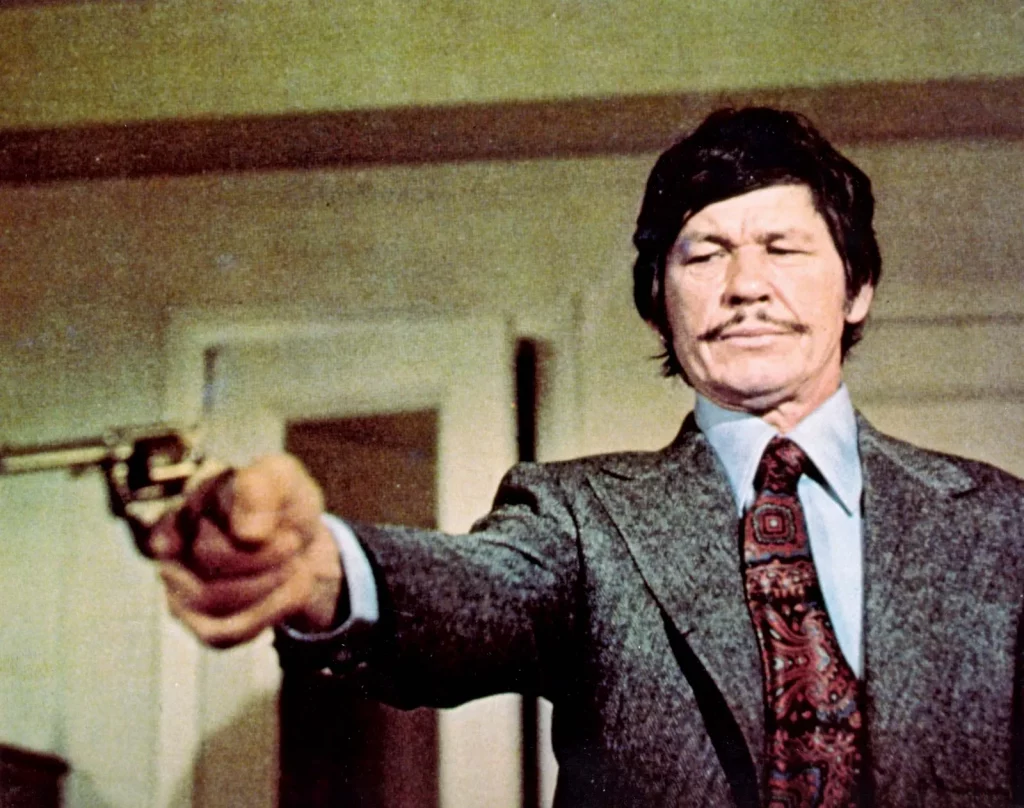
“Vera Cruz” was his debut picture as Charles Bronson (1954). After that, he made a great impression as the major antagonist in Alan Ladd’s western “Drum Beat.”
He appeared in “Target Zero” (1955), “Big House, U.S.A.” (1955), and “Jubal,” a Daves western starring Glenn Ford, in which he had a key part. Following that, he played the lead in the syndicated crime drama “The Sheriff of Cochise” episode “The Apache Kid.”
After the series was renamed “U.S. Marshal,” he was cast twice more in 1959. He also appeared in three episodes of Alfred Hitchcock Presents: “And So Died Riabouchinska” (1956), “There Was an Old Woman” (1956), and “The Woman Who Wanted to Live” (1956), as well as the short-lived CBS situation comedy “Hey, Jeannie!” (1962).
In addition, he had a supporting part in Sam Fuller’s “Run of the Arrow” and was cast in the Western series “Colt.45” in 1957. (1957). In 1958, he played Butch Cassidy on the television western Tales of Wells Fargo in the episode “Butch Cassidy.”
Mike Kovac was his character in the ABC detective series “Man with a Camera” (1958-1960). Following that, he featured in Roger Corman’s “Machine-Gun Kelly” (1958), a biography of a real-life gangster, as well as “Gang War” (1958), “When Hell Broke Loose” (1958), and “Showdown at Boot Hill” (1958). (1959).
He portrayed Steve Ogrodowski, a naval intelligence officer, in two episodes of the CBS military sitcom/drama “Hennesey” and Rogue Donovan in “Yancy Derringer” on television (episode: “Hell and High Water”).
Following that, he starred in a “Twilight Zone” episode (“Two”; 1961) and five episodes of Richard Boone’s “Have Gun – Will Travel” series (1957-1963).
In 1959, he got a supporting part in the pricey war film “Never So Few,” and in 1960, he was featured in the “Riverboat” episode “Zigzag.”
In the same year, he played “Dutch Malkin” in the “The Islanders” episode “The Generous Politician” and “Frank Buckley” in the TV western “Laramie” in the 1960 episode “Street of Hate.”
After appearing in “The Magnificent Seven” in 1960, he became famous. In an episode of “One Step Beyond” in 1961, he was featured in the role of a boxer (S3E16, titled “The Last Round”).
In 1961’s “Master of the World,” he portrayed the romantic protagonist opposite Vincent Price. In the same way, he played a supporting role in MGM’s “A Thunder of Drums” (1961), but a larger one in “X-15” (1962). (1961).
He went on to perform a supporting part in CBS’s “General Electric Theater” episode “Memory in White” in 1961.
In 1962, he co-starred in the film “Kid Galahad” with Elvis Presley, and a year later, he co-starred in the television series “Empire.” In 1963, he was cast in the Hollywood production “The Great Escape,” and in the same year, he portrayed the villain in “4 for Texas.”
He appeared in many television shows between 1963 and 1967, including “The Travels of Jaimie McPheeters,” “The Legend of Jesse James,” and “Combat!” In 1967, he starred opposite Lee Marvin and Ernest Borgnine in the film “The Dirty Dozen,” which starred Lee Marvin and Ernest Borgnine.
After relocating to Europe, he appeared in films such as “Once Upon a Time in the West,” “Guns for San Sebastian,” and “Cold Sweat.” In addition, he appeared in the French film “Rider on the Rain.”
Following that, he appeared in the films “The Valachi Papers,” “The Mechanic,” and “The Stone Killer.”
At the age of 52, he made his big-screen debut as Paul Kersey in “Death Wish,” which was such a hit that it generated four sequels over the following two decades, each with him reprising his part as Kersey.
He appeared in two Tom Gries films: “Breakout” (1975) and “Breakheart Pass” (1976). (1975).
In 1975, he featured in Walter Hill’s “Hard Times,” a film set during the Great Depression that received positive reviews from critics and moviegoers alike. It solidified his reputation as an action hero.
It was regarded by his admirers as his greatest role to date. He featured in middling hits like “Breakheart Pass,” “From Noon Till Three,” and “Telefon” after back-to-back successful films.
“Love and Bullets” (1979) and “Borderline” (1980) were his next two pictures for ITC (1980). He had more brutal parts in films including “10 to Midnight,” “The Evil That Men Do,” “Assassination,” and “Kinjite: Forbidden Subjects” throughout the next decade. In 1986, he appeared in the TV movie “Act of Vengeance.”
After that, he produced an outstanding performance in “The Indian Runner.” He played a sympathetic newspaper editor in “Yes Virginia, there is a Santa Claus,” and he was also featured in “The Sea Wolf” as a respite from violent parts (1993).
“Death Wish V: The Face of Death,” which he starred in in 1994, was his final theatrical release. Family of “Cops” (1995), “Breach of Faith: A Family of Cops 2” (1997), and “Family of Cops 3” (1998) were his last three films (1999).
Did Charles Bronson have Alzheimer’s?
A day later Bronson’s death, it was announced that he had Alzheimer’s.
Awards and Achievements of Charles Bronson
Charles Bronson was nominated for an Emmy Award in 1961 for his supporting performance in CBS’s General Electric Theater episode “Memory in White,” presented by Ronald Reagan.
Playing the lead in Rider on the Rain (1970), a French thriller that was a great smash in France and received a Golden Globe Award for Best Foreign Language Film in Hollywood.
Together with Sean Connery, he received a special Golden Globe Henrietta Award for “World Film Favorite – Male.” For sustaining wounds while serving in the war, Charles Bronson was awarded the “Purple Heart.”
In 1996, he was given the “Golden Boot Awards,” which was his first-ever winning honor. In 1972, she won the Henrietta Award for “World Film Favorite” at the Golden Globes in the United States.
In 1980, he was awarded a star on the Hollywood Walk of Fame for his contribution to the motion picture industry.
Who was Charles married to in his married life?
Charles Bronson was a husband and father. In the year 1949, he married his first wife, Harriet Tendler. When they were both just starting out as actors, they met in Philadelphia.
They have two children together, ‘Tony’ and ‘Suzanne.’ They later divorced in 1965. Charles married Jill Ireland, his second wife, on October 5, 1968, after meeting her in 1962.
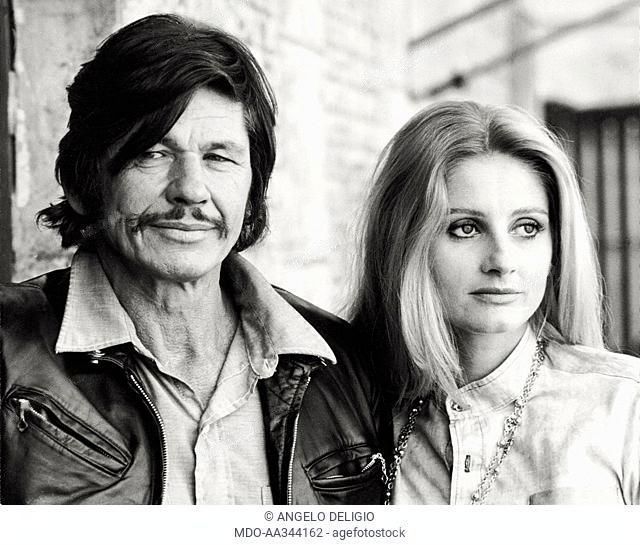
She was married to Scottish actor David McCallum at the time, and the two even shared a screen in The Great Escape. Bronson and Jill have two children, Zuleika Bronson and Katrina Holden Bronson, together.
They were married until Jill died of breast cancer at the age of 54 on May 18, 1990. Katrina, their daughter, is an American film director.
After that, he married Kim Weeks, a former Dove Audio employee, for the third time in December 1998. Until Bronson’s death in 2003, the pair were married for five years. He was not homosexual and had a heterosexual sexual orientation.
Did Charles Bronson leave his children any money?
Charles Bronson’s children got houses and other real estate holdings and millions of cash but still, they weren’t happy with that.
Charles Bronson’s Net Worth and Earnings Throughout His Career
Charles Bronson was an accomplished and wealthy American actor, with a net worth of $65 million at the time of his death.
He was the highest-paid actor at the height of his career, receiving $1 million for each of “The Stone Killer,” “Chino,” “Death Wish,” and “St. Ives.” In 1982, he was paid $1.5 million for “Death Wish II” and $2 million for “10 To Midnight.”
From Warner Brothers, he also got 10-15% of gross profits from movie ticket sales and film rentals. His acting profession was his source of money. He was enjoying a wealthy lifestyle before his death.
He has a number of endorsement agreements and was the face of a number of major corporations. His precise earnings, salary information, and career earnings have yet to be revealed.
What was Charles Bronson’s height and weight?
During his day, Charles Bronson was a gorgeous actor who drew a lot of females in with his amazing charisma and lovely grin.
His height was 1.74 meters and his weight was 75 kilograms (165 pounds). His hair was a salt and pepper tint, and he had dark brown eyes. His physique was athletic.
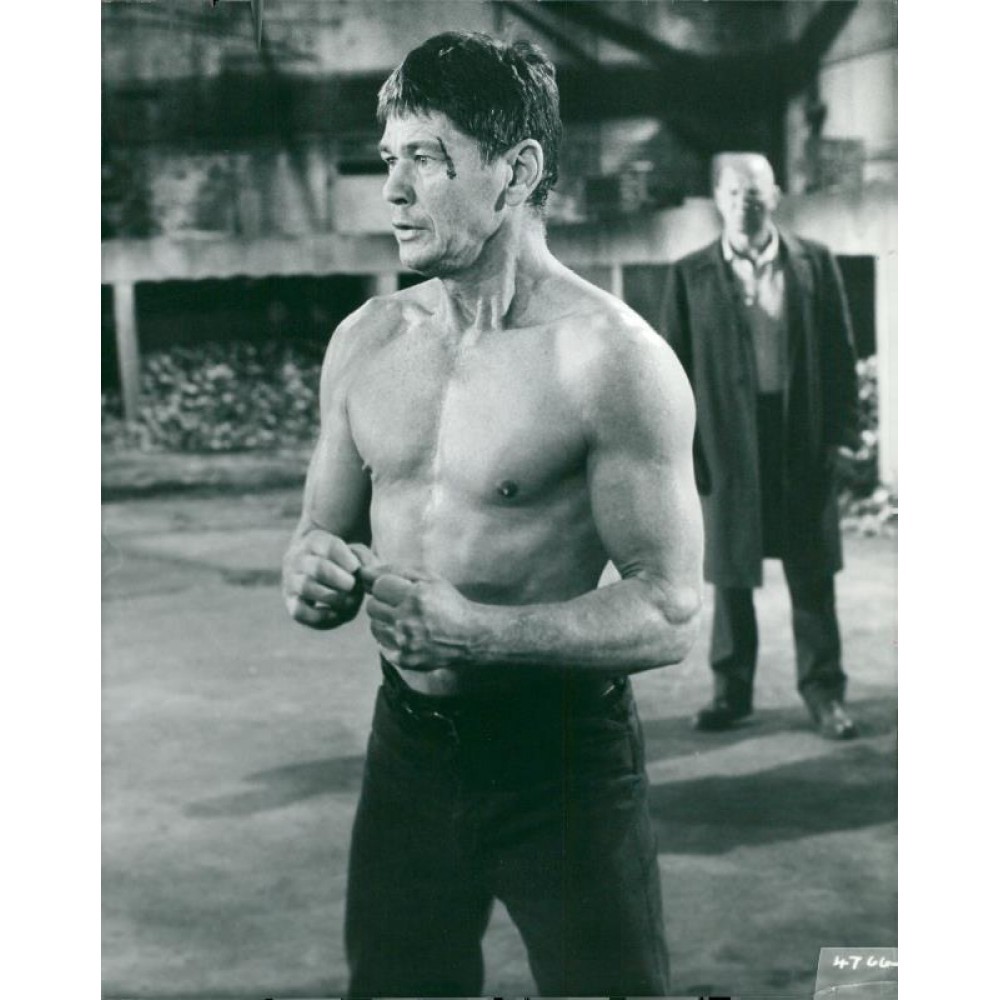
What If I Told You…
He spoke Lithuanian, Russian, and Greek in addition to English. Charles Bronson was one of 14 children. His zodiac sign was Scorpio. He worked in the mine until 1943 when he enrolled in the US Army Air Forces during World War II.
In the year 1951, he had his first uncredited film part as a sailor in Henry Hathaway’s picture “You’re in the Navy Now.”


